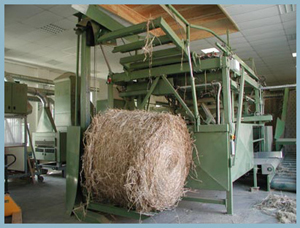COMMERCIAL AND INDUSTRIAL HEMP
- What is Hemp?
- The Hemp Story
- Hemp and its usage
- Textile,Apparel and Paper Products
- Specialty Products Made from Hemp Grain
- Automobile Parts
- Fibreglass Alternative
- Carpet
Speciality
Products Made from Hemp Grain
Industrial hemp grain and oil, made from industrial hemp grain, can be used
to make a number of high-value products. Essentially, hemp competes in these
markets with other high-value products made from natural oils. Currently, many
of these products are already produced in the United States and other countries
by processing imported industrial hemp grain. Markets for these higher value
products are growing, and while the future is hard to predict, it is reasonable
to believe that markets for these luxury goods will rise as disposable incomes
continue to rise in the United States.
 Shampoos
and skin care products are one of the most promising groups of products
made from industrial hemp grain oils. In addition to having a fashion
appeal, skin care products made with industrial hemp are able to penetrate
three layers of skin, improving their effect.
Shampoos
and skin care products are one of the most promising groups of products
made from industrial hemp grain oils. In addition to having a fashion
appeal, skin care products made with industrial hemp are able to penetrate
three layers of skin, improving their effect.
According to a German cosmetics manufacturer, the prices of hemp shampoos and
cosmetic oils are high but competitive with other natural cosmetic products
(Stamm, 1997).
 Shampoos
and skin care products made from industrial hemp grain can be successful
at the high end of the market due to their high quality and potential
fashion appeal.
Shampoos
and skin care products made from industrial hemp grain can be successful
at the high end of the market due to their high quality and potential
fashion appeal.
Besides personal cleansers and cosmetics, there are other industrial uses for
hemp oil. For example, oils have been used in various printing and painting
applications. Paints made from hemp oils have been found to penetrate wood
better than other paints, and hemp oils have also been used for printer’s
colours in offset printing (Wirtshafter, 1994).
Indeed, hemp oil historically was a major component in paints and varnishes.
Moreover, hemp oil can be used in cleansers for printing equipment. Finally,
hemp oil has been used in some glues and industrial lubricants.
Speciality food products are another higher value market where industrial hemp
products can compete. Firms have experimented with a variety of products such
as cheese, margarine, beer, and health bars. In addition, the availability
of dehulled hemp grain in recent years has made it easier to utilise industrial
hemp in food, including in food oil (Rose, 1998). Indeed, one of the largest
potential markets appears to be food oil made from hemp grain. This hemp oil
is eaten with food such as potatoes or used as a marinade and salad dressing
(Wirtshafter, 1994).
This oil has an advantage over substitutes such as flax oil because it has
a much longer shelf life (Wirtshafter, 1994). Such food oils are already being
produced in the United States from imported grain and sold competitively. Like
other high-value industrial hemp products, there may be inherent appeal in
the demand for food made with industrial hemp. However, there also are dietary
reasons why food products made from industrial hemp can compete with foods
made with other crops. Industrial hemp oil has a better profile of key nutrients,
such as essential fatty acids and gamma-linolenic acid, than other oils (Wirtshafter,
1994), and a similar profile of other nutrients, such as sterols and tocopherols.
Also, industrial hemp meal has a high protein efficiency ratio (Rose, 1998),
which means that it has a high percentage of proteins that are easy to digest.
Hemp grain and its by-products also have been found to be useful as animal
feed. For example, industrial hemp grain has been used in birdseed in the United
States for decades (Wirtshafter, 1997). In addition to the whole grain, researchers
also have examined the market potential for hemp meal, which is a by-product
from making hemp oil, as an animal feed. Horse and cow feeds made with hemp
press cake have been found to be competitive in the United States with other
feeds (Wirtshafter, 1997), in part because the feeds made with hemp meal improve
hoof and hair quality (Coulter, 1998; Billings, 1998).
Finally, it should be mentioned that the demand for industrial hemp in a variety
of uses has grown rapidly in Western Europe in the last decade. Cultivation
has quadrupled from 1990 to 1997. This very rapid growth occurred in part because
countries such as The Netherlands, United Kingdom, Germany, and Austria only
recently legalised industrial hemp cultivation. Even in France, however, where
the cultivation of industrial hemp has remained legal during the last 50 years,
cultivation of industrial hemp has more than doubled in the 1990s.
The need to locate industrial hemp processing facilities near where hemp straw
is grown has been verified in several research studies and in the actual practice
of the industrial hemp industry in several countries. Analysis in the comprehensive
study of the industrial hemp industry, The Hemp Product Line Project, by the
nova Institute of Germany, reported that industrial hemp farms must be located
within 30 kilometres (about 19 miles) of the hemp processing facilities. The
KENEX corporation, which has set up a decorticating facility just outside of
Chatham, Ontario, Canada, reported that it will be purchasing hemp grown within
a 50 mile radius of their processing facility.





